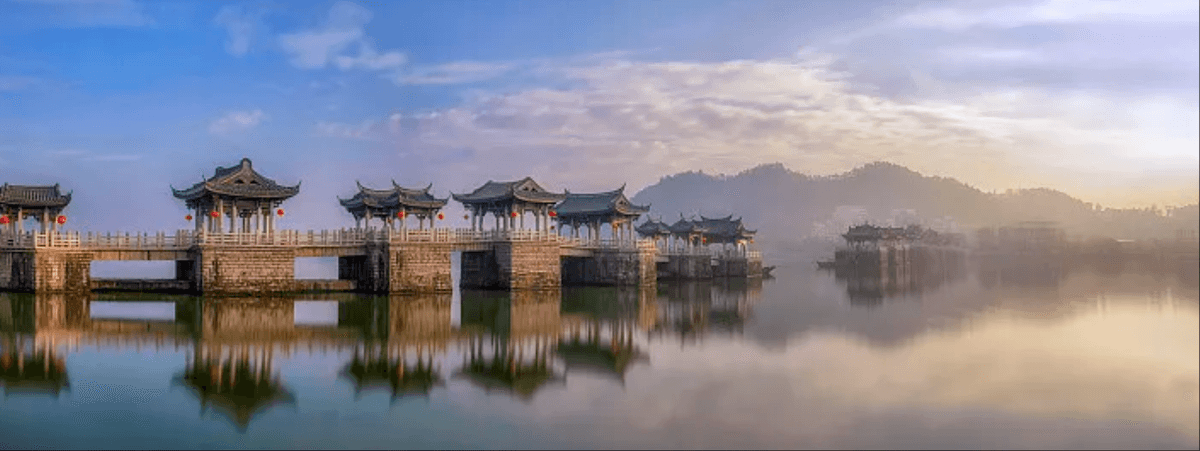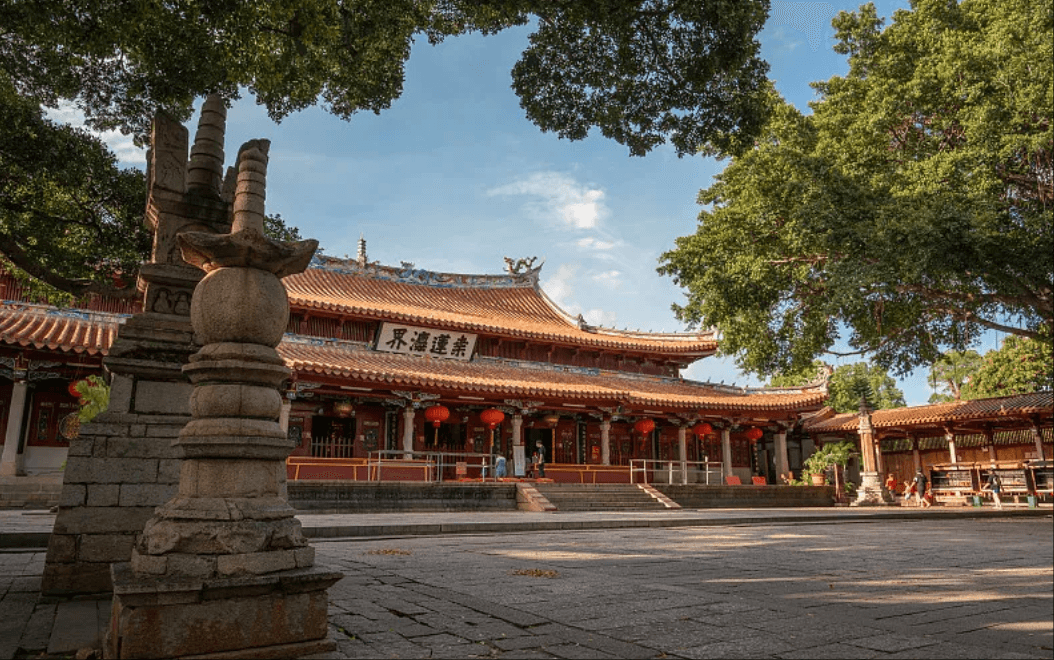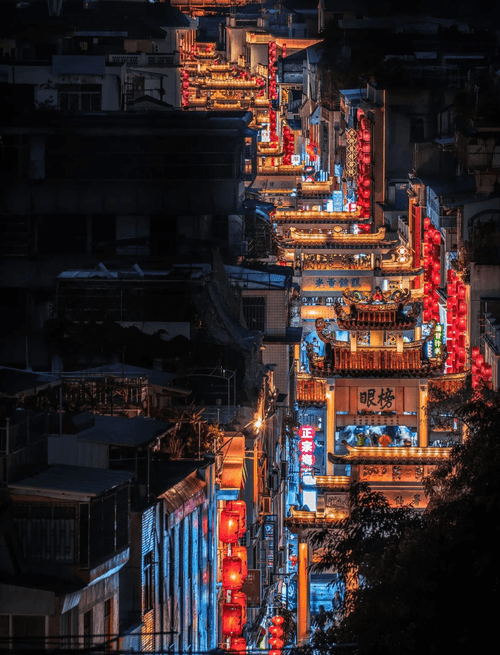
【Hot】4 Days in Chaoshan —— An Ancient Realm of Timeless Traditions & Exquisite Tastes
From $1499/Person
This is a private 4-day cultural journey, designed for a minimum of four participants. Travel at a relaxed pace with exclusive access to curated experiences. The program includes accommodation in premium boutique hotels, dining at renowned local fine restaurants and private kitchens, and the comfort of a dedicated business vehicle throughout. All immersive activities—such as workshops, performances, and hands-on cultural classes—are guided by expert instructors, with all participation fees and private sessions fully included.
→ Click to Request a Quote
Understanding Chaoshan: The Cultural Code of Two Cities with a Millennium of Heritage
Chaozhou and Shantou are core cities of Chaoshan culture, yet each has its own character: Chaozhou is a "Famous Town by the Ridges and Sea," a millennium-old city preserving Tang and Song dynasty traditions; Shantou is a "Century-Old Commercial Port," where arcade streets are filled with stories of overseas Chinese (qiaoxiang). This land in eastern Guangdong, established as Chaozhou Prefecture in the Tang Dynasty, has long been praised as a "Cultural Pearl by the Coast" (once called "Zoulu by the Sea," a term honoring its rich culture and education). Together, Chaoshan opera, gongfu tea, and Yingge Dance weave its unique cultural fabric.
Climatically, Chaoshan has a subtropical maritime monsoon climate with an annual average temperature of 21-22°C. Spring (March-April) is humid and foggy, summer (June-August) may see typhoons, and the best travel season is October-December: the weather is crisp, Phoenix Mountain’s Dan Cong tea is in harvest, and the sea breeze on Nan'ao Island is pleasantly cool. If you visit during the Lunar New Year (January-February), you might catch the Yingge Dance parade – performers with painted faces wave wooden sticks and march to drumbeats, the most vibrant symbol of Chaoshan’s New Year celebrations.
4-Day Itinerary: Immersing in Chaoshan’s Traditions & Overseas Chinese Culture
Day 1: Chaozhou Ancient City – Walking on Millennium-Old Flagstones
Morning at the "No.1 Bridge of the East" Guangji Bridge is quiet at dawn. First built in the Southern Song Dynasty (1171), it’s famous for its unique design: "18 floating boats connecting 24 piers." During the day, floating boats link the piers for pedestrians; at dusk, the boats are moved aside to let ships pass. Stand on a pier and watch morning mist drift over the city walls, with the soaring eaves of Guangji Gate Tower across the Han River – it feels like stepping into the bustling scenes of Along the River During the Qingming Festival. At the bridgehead, the time-honored "Xie Huailiang" shop sells sesame tea (creamy black sesame paste with crushed peanuts) – a classic Chaozhou morning drink.
Afternoon at Ancient Temples & Memorial Archways Kaiyuan Temple’s Song Dynasty wooden dragon pillars hold a millennium of craftsmanship: dragon scales are carved in layers without a single nail. In front of the main hall, a Tang Dynasty stone pillar is inscribed with the Diamond Sutra – its weathered characters still show the grandeur of the Tang Dynasty. Walk to Memorial Archway Street, where 22 Ming and Qing dynasty archways line the road. The inscriptions on "Zhuangyuan Archway" (for top scholars) and "Shangshu Archway" (for high officials) still honor the achievements of Chaoshan’s ancient scholars. Around the corner, "Hu Rongquan" (a 100-year-old shop) is famous for yamuniang – glutinous rice dumplings filled with sesame and peanut paste, floating in ginger syrup like little ducks (hence the name, meaning "duck mother"). They’re sweet but not cloying.
Evening with Intangible Cultural Heritage (ICH) Visit Chaozhou’s Qiancifu (Broken Porcelain Mosaic) Museum at dusk. Artisans create scenes like "Mu Guiying Takes Command" using colored porcelain shards – this Ming Dynasty craft turns broken porcelain into art, often seen on the roofs of Chaoshan ancestral halls. If you’re lucky, catch a "Chaoshan Opera Tea House" performance: elderly artists sing Chen San and Wu Niang (a classic Chaoshan opera), with pipa and coconut fiddle music mixing with the aroma of gongfu tea from street stalls. For dinner, try "Laocangqiao Glutinous Rice Stuffed in Pig Intestines" – glutinous rice mixed with mushrooms, dried shrimp, and pork, stuffed into pig intestines, steamed, sliced, and dipped in sweet soy sauce. It’s a must-have for Chaoshan festivals.
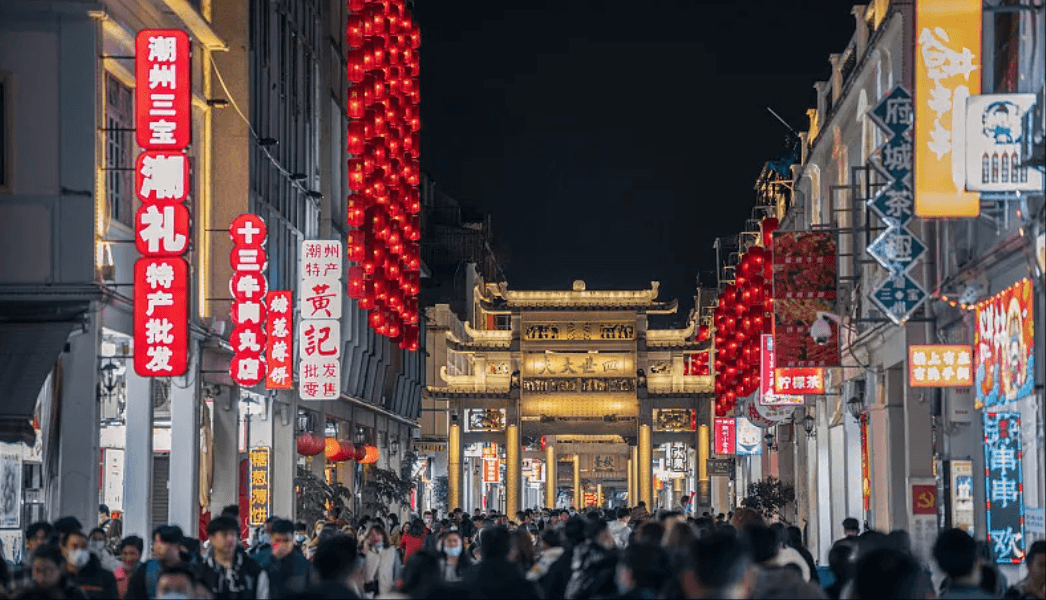
Day 2: Chaozhou’s Rural Charm – Ancient Villages & Tea Serenity
Clan History at Longhu Ancient Village Drive 30 minutes to Longhu Ancient Village in the morning. Founded in the Southern Song Dynasty, this village is a living fossil of Chaoshan clan culture. Its "Three Streets and Six Lanes" layout holds over 100 Ming and Qing ancestral halls. The stone gate of "Fangbo Mansion" is inscribed with "Imperial Edict," showing the family’s past glory. Elderly women sell shuke guo (glutinous rice cakes mixed with mouse-ear grass, filled with sesame and peanuts) – a bite fills your mouth with herbal fragrance.
Tea Meditation on Phoenix MountainHead to Phoenix Mountain in the afternoon. Tea plantations cover the hillsides, shrouded in mist, as farmers hand-pick Dan Cong tea leaves (only "one bud and two leaves" are selected). Stop at a tea house near the "Song Dynasty Tea King Tree" to experience gongfu tea preparation: warm the teapot, rinse the tea, pour water from a height, and serve slowly. The tea tastes mellow with orchid notes. The tea house owner will tell you: "Dan Cong" means "single bush" – each tea bush is grown separately, so every bush has a unique flavor.
Handmade ICH ExperienceOn the way back, visit a Chaozhou hand-pulled red clay teapot studio. Artisans shape red clay into teapots by hand, then carve orchid patterns with bamboo knives. Try making a small teacup – it may not be perfect, but it carries your unique touch. For dinner, go to "A Wen’s Chaoshan Rice Noodle Soup" – milky beef bone broth with hand-beaten beef balls (bouncy enough to bounce off chopsticks), tender beef slices, and dry rice noodles tossed with satay sauce. It’s a Chaoshan home-style favorite.
Day 3: Shantou’s Overseas Chinese Vibe – Arcades of a Century-Old Port
Arcade Memories at Xiaogongyuan (Small Park)Shantou’s Xiaogongyuan arcade district glows warm in the morning sun. Built in the 1930s, this commercial center centers on Zhongshan Memorial Pavilion, with streets radiating outward. The arcades have Southeast Asian-style carvings on their arches, and the "parapet walls" on the second floor hide the ingenuity of Chaoshan craftsmen. Step into "Laoma Palace Opera Stage" (Laoma Palace honors Mazu, the sea goddess) to watch Su Liuniang (a classic Chaoshan opera). Elderly tea drinkers sip gongfu tea while watching, with peanut shells piling up at their feet – a true Shantou daily scene.
A Shantou Feast for the Taste BudsFor lunch, go straight to "Fuhecheng Beef Hot Pot" – the key to Chaoshan beef hot pot is "freshly slaughtered and sliced." Try diaolong (tender beef belly), shibing (juicy beef rump), and xiongkouyou (crispy beef brisket fat). Dip them in satay sauce or celery bits for full flavor. In the afternoon, have a snack at "Laocangqiao (Shantou Branch)" (same as the Chaozhou shop, adapted to Shantou tastes), then buy laoxianghuang (preserved bergamot) at a local shop – sweet and sour, it’s a popular Chaoshan gift for guests.
Family Ties in Qiaopi (Overseas Chinese Letters)Visit Shantou Qiaopi Museum in the evening. Qiaopi refers to letters with remittances sent by overseas Chaoshanese to their families. On yellowed paper, you’ll read lines like "Sending 50 yuan to support Mother" and "Is the hometown safe?" The museum’s recreated "qiaopi office" lets you imagine the joy of families receiving these letters. For dinner, try "Laochaoxing" – hongtao guo (red peach-shaped glutinous rice cakes, symbolizing good luck) filled with glutinous rice, peanuts, and dried shrimp; and zhizong (glutinous rice dumplings dyed with gardenia juice, eaten with white sugar to cool the body).

Day 4: Shantou’s Coastal Beauty – The Blue Romance of Nan'ao Island
Morning History on the Island Drive 1 hour from Shantou to Nan'ao Island in the morning. Cross Nan'ao Bridge and watch the sea turn from muddy brown to clear blue. First stop: Zongbing Mansion (ancient military headquarters). This Ming Dynasty anti-pirate site has a "Fujian-Guangdong Boundary Stone," showing the island’s unique status as "divided by two provinces." The ancient banyan tree in the courtyard is said to have shaded Zheng Chenggong’s troops (a Ming Dynasty hero who recovered Taiwan). Rent an electric bike to circle the island – feel the wind in your hair, with wind turbines and coastlines creating a beautiful view.
Blue Seas and Golden Sands at Qing'ao BayReach Qing'ao Bay at noon. Its seawater has 5-meter visibility, and the sand is as fine as powder – it’s called "the Oriental Hawaii." Rent a sun umbrella and order haishihua (seaweed jelly) – made by boiling seaweed, served with honey, watermelon, and taro balls. It’s icy and refreshing. For water activities, try sailing or jet skiing to feel the sea breeze and waves. Lunch at a "Island Seafood Restaurant" – steamed grouper is incredibly fresh, and stir-fried baoke (small clams) with beer is a perfect island treat.
Evening Fisherman’s ReturnGo to Houzhai Town’s fishing port at dusk. Watch fishing boats return and fishermen unload fresh shrimp and crabs – the busy fish market is full of life. Buy a bag of freshly roasted squid strips (salty and savory) – a great souvenir. Before leaving, watch the sunset by the sea: orange light spills over the water, with fishing boat silhouettes moving slowly – it’s like a living oil painting.
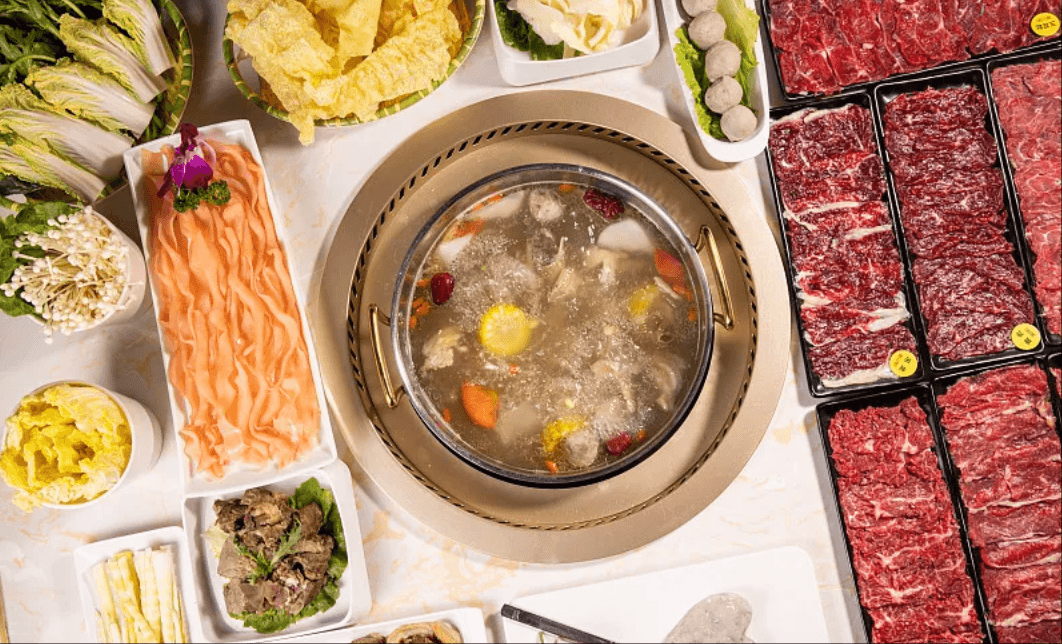
A Taste of Chaoshan: Food Maps for Both Cities
Must-Try in Chaozhou
Xie Huailiang: Sesame Tea (creamy sesame paste with peanuts)
Hu Rongquan: Yamuniang (glutinous rice dumplings in ginger syrup), Spring Rolls (crispy skin filled with chives, pork, and tofu)
Laocangqiao: Glutinous Rice Stuffed in Pig Intestines (salty and chewy)
A Wen’s: Chaoshan Rice Noodle Soup (milky beef broth with bouncy beef balls)
Must-Try in Shantou
Fuhecheng: Beef Hot Pot (freshly sliced beef parts)
Laoma Palace: Zongqiu (dual-flavor rice dumplings – salty: glutinous rice with pork and salted egg; sweet: glutinous rice with red bean paste)
Laochaoxing: Hongtao Guo (red peach-shaped glutinous rice cakes), Zhizong (gardenia-dyed rice dumplings)
Laocangqiao (Shantou Branch): Glutinous Rice Stuffed in Pig Intestines (adapted to Shantou’s milder taste)
Chaoshan’s Shared Delicacies
Gongfu Tea: Dan Cong Tea (Chaozhou) and Phoenix Narcissus Tea (Shantou) – brewed with the "high pour, low serve" method for a mellow taste.
Hand-Beaten Beef Balls: Chaozhou’s are bouncier; Shantou’s are softer – both beaten for over 2 hours.
Guo (Rice Cakes): Shuke Guo (herbal flavor), Puzi Guo (spring-only, with puzi leaves), Wumi Guo (gluten-free, with vegetable filling, made from sweet potato starch).
Immersive Experiences: Touching Chaoshan’s Culture
ICH Handicraft Experiences
Qiancifu (Broken Porcelain Mosaic): At Chaozhou’s museum, create simple patterns with porcelain shards – experience the "turning waste into beauty" craft.
Hand-Pulled Red Clay Teapots: At Chaozhou studios, shape clay into teacups by hand – take your creation home.
Chaoxiu (Chaoshan Embroidery): At Shantou’s embroidery institute, learn to stitch simple patterns with gold and silver threads – known for its 3D raised stitching.
Folk Customs & Tea Culture
Yingge Dance: Join parades in Chaoyang (Shantou) or Puning (Chaozhou) during the Lunar New Year – feel the energetic, drum-driven dance.
Gongfu Tea Class: Learn to brew tea at teahouses near Shantou’s Xiaogongyuan – understand the "tea etiquette" of respect and harmony.
Chaoshan Opera Experience: At teahouses near Chaozhou’s Kaiyuan Temple, learn simple opera lines and take photos in traditional costumes – Chaoshan opera is called the "Red Bean of the South" for its charm.
Island & Nature Activities
Seafood Foraging on Nan'ao Island: Join fishermen at Qing'ao Bay’s tidal flats in the morning to dig clams and catch small crabs – experience fishing life.
Tea Picking on Phoenix Mountain: Pick Dan Cong tea leaves in spring (Chaozhou) – learn to sort and roast tea, then take your homemade tea home.
Han River Boat Tour: Take a boat near Chaozhou’s Guangji Bridge – enjoy river views and listen to boatmen tell Han River legends.

Chaoshan’s Essence: Overseas Chinese Culture & Millennium Heritage
Chaoshan’s soul lies in the mix of "qiaoxiang (overseas Chinese hometown)" and "ancient traditions." Shantou’s Xiaogongyuan arcades were built by overseas Chaoshan merchants – they brought back Southeast Asian architectural designs and combined them with Chaoshan’s golden wood carvings. Qiaopi letters carry the "root" of homesickness: even far abroad, Chaoshanese stayed connected to their hometowns through these letters – a tradition passed down for generations.
Chaozhou’s millennium heritage is in the details: Guangji Bridge’s opening-closing design preserves Southern Song wisdom; Kaiyuan Temple’s wood carvings keep Tang Dynasty craftsmanship alive; gongfu tea follows the spirit of "harmony, respect, precision, and joy." Today, new cafes open in old arcades, and ICH crafts are blended with modern design – tradition and modernity coexist beautifully in Chaoshan.
Epilogue: The Warmth of Chaoshan Life
When you leave Chaoshan, your bag will hold hand-made red clay teacups, Dan Cong tea, and laoxianghuang – and your taste buds will still remember the beef hot pot. These two cities lack Guangzhou’s bustle, but they have more delicate daily joys: elderly tea drinkers chatting under arcades, artisans focused on their crafts in lanes, fishermen waiting for boats to return by the sea.
Chaoshan’s charm isn’t in shocking scenic spots, but in its "slowness" and "authenticity": gongfu tea needs patience to brew; glutinous rice in pig intestines carries the taste of time; Yingge Dance shows the passion in its people’s bones. Every flagstone, every sip of tea, every word of Chaoshan dialect tells stories of a millennium of traditions and overseas Chinese affection – this is Chaoshan, two cities that will stay in your heart.
→ Click to Request a Quote




